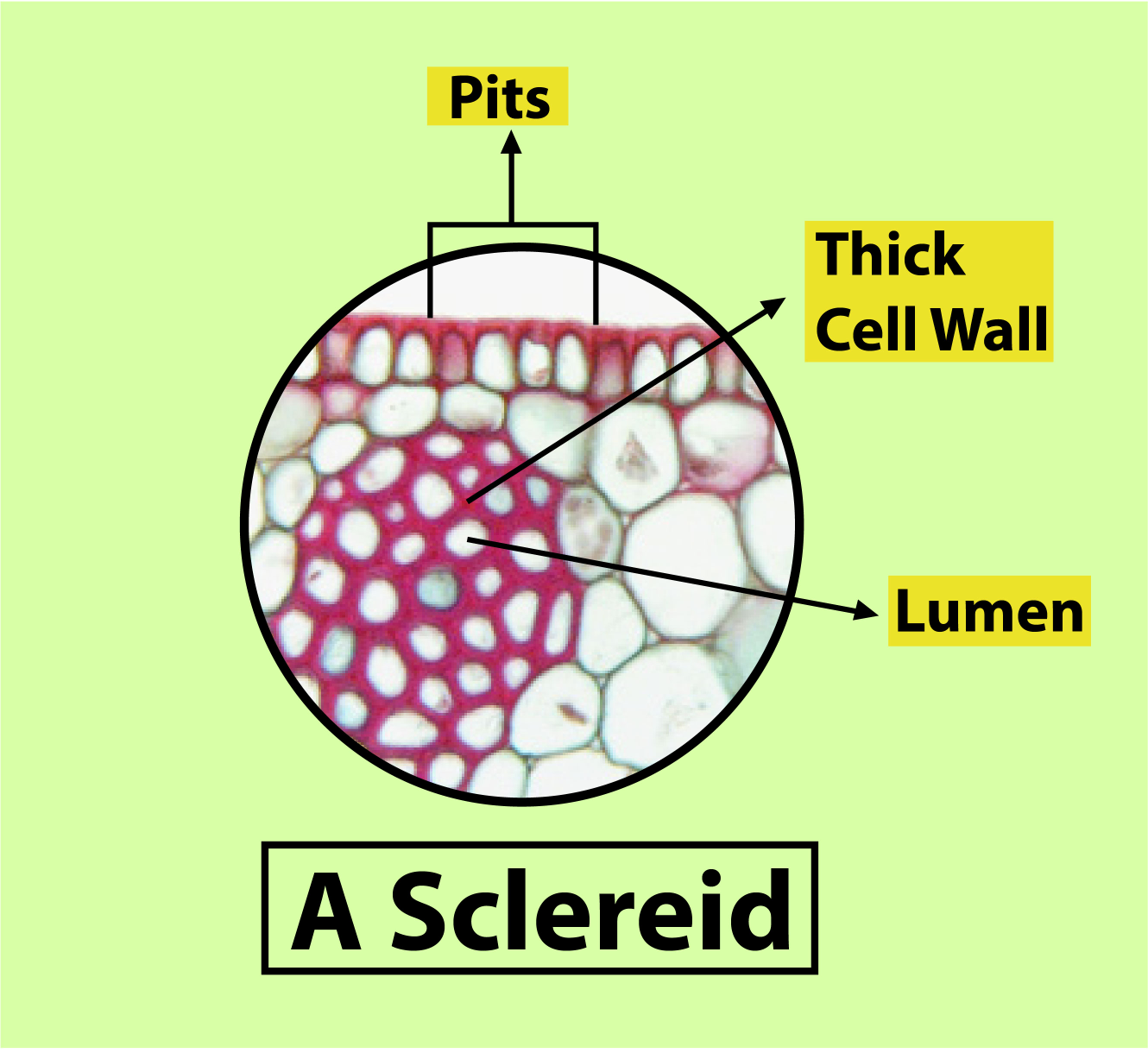
Sclereids belong to
(A)Collenchyma
(B)Xylem
(C)Sclerenchyma
(D) Sclerenchyma fibers
Answer
490.2k+ views
Hint: There are some specialized cells present in plants. They have reduced forms of types of cells that form a small bundle of sturdy layers of tissue in most of the plants. They persist through thick lignified cellular walls.
Complete answer:
Sclereids are a reduced form of sclerenchyma cells. Scleroid are formed through sclerosis of parenchyma cells. The sclerification increases the disease resistance property of the plant as it increases the thickening of the cell wall.
Additional Information:
Alexander Tschirch introduced the term ‘Sclereid’ in 1885. Sclereid is present in different parts of the plants like stem, leaf, fruit, etc.
-Leaf sclereids-Sclereids are extremely variable in shape and size in leaf. It may be branched, columnar, or diffused. It provides mechanical support to the leaf.
-Stem sclereids- numerous sclereids are present in the stem and mostly in the pith of the stem. They are an example of a stone cell.
-Fruit sclereids- In some fruits, sclereids are present inside the fruit and in some, it is present in the outer walls of the fruit. For example, apple sclereids from the endocarp.
-Seed sclereids-Seed coats are usually hard and it is due to the thickening of the cell wall through sclerification. Sclereids are present in the seed coat of a coconut.
So, the correct answer is ' Sclerenchyma’.
Note: The gritty texture of the pear is due to the specialized cells which are known as Sclereids. It also provides structural support and strength to the tissue. The cores of apples are formed due to the presence of numerous Sclereids.

Complete answer:
Sclereids are a reduced form of sclerenchyma cells. Scleroid are formed through sclerosis of parenchyma cells. The sclerification increases the disease resistance property of the plant as it increases the thickening of the cell wall.
Additional Information:
Alexander Tschirch introduced the term ‘Sclereid’ in 1885. Sclereid is present in different parts of the plants like stem, leaf, fruit, etc.
-Leaf sclereids-Sclereids are extremely variable in shape and size in leaf. It may be branched, columnar, or diffused. It provides mechanical support to the leaf.
-Stem sclereids- numerous sclereids are present in the stem and mostly in the pith of the stem. They are an example of a stone cell.
-Fruit sclereids- In some fruits, sclereids are present inside the fruit and in some, it is present in the outer walls of the fruit. For example, apple sclereids from the endocarp.
-Seed sclereids-Seed coats are usually hard and it is due to the thickening of the cell wall through sclerification. Sclereids are present in the seed coat of a coconut.
So, the correct answer is ' Sclerenchyma’.
Note: The gritty texture of the pear is due to the specialized cells which are known as Sclereids. It also provides structural support and strength to the tissue. The cores of apples are formed due to the presence of numerous Sclereids.

Latest Vedantu courses for you
Grade 10 | CBSE | SCHOOL | English
Vedantu 10 CBSE Pro Course - (2025-26)
School Full course for CBSE students
₹37,300 per year
Recently Updated Pages
Master Class 11 Economics: Engaging Questions & Answers for Success

Master Class 11 Business Studies: Engaging Questions & Answers for Success

Master Class 11 Accountancy: Engaging Questions & Answers for Success

Master Class 11 English: Engaging Questions & Answers for Success

Master Class 11 Computer Science: Engaging Questions & Answers for Success

Master Class 11 Maths: Engaging Questions & Answers for Success

Trending doubts
State and prove Bernoullis theorem class 11 physics CBSE

1 ton equals to A 100 kg B 1000 kg C 10 kg D 10000 class 11 physics CBSE

State the laws of reflection of light

One Metric ton is equal to kg A 10000 B 1000 C 100 class 11 physics CBSE

Difference Between Prokaryotic Cells and Eukaryotic Cells

1 Quintal is equal to a 110 kg b 10 kg c 100kg d 1000 class 11 physics CBSE




